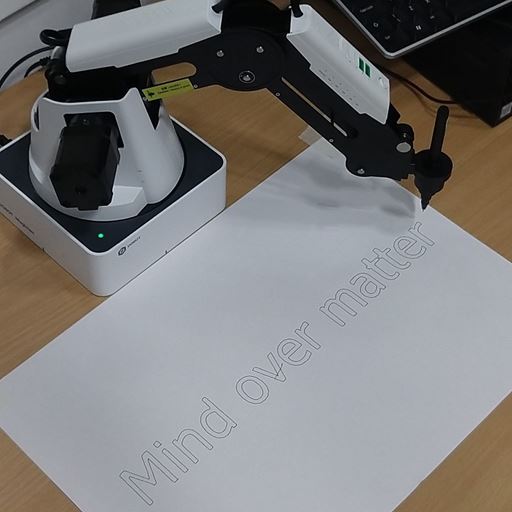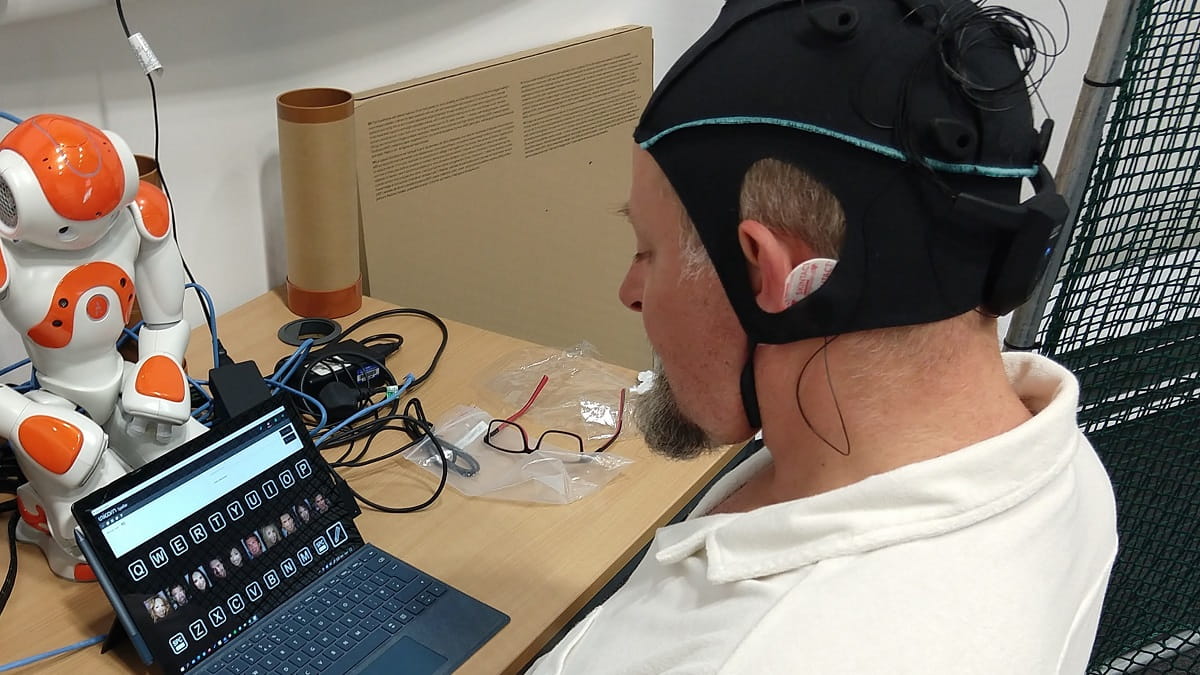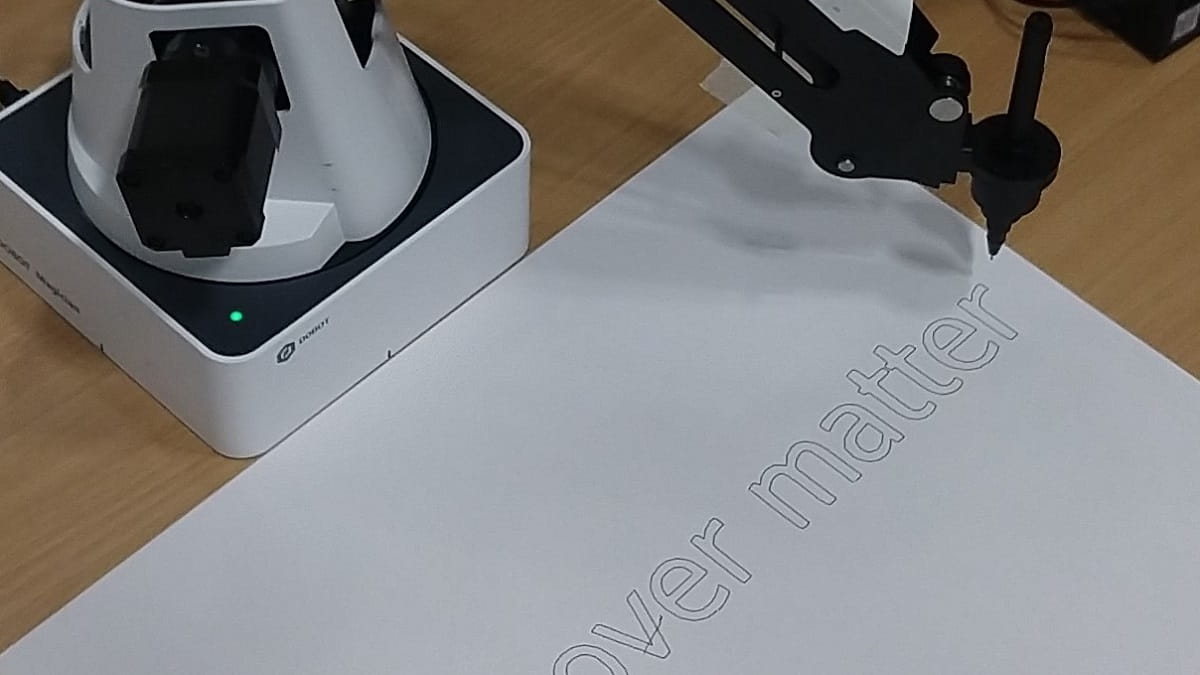The exhibit

Brains, neural interfaces and BCIs
Neural interfaces (NIs) are emerging technologies that enable direct communication with the nervous system and provide access to motor, sensory, emotional, and cognitive function.
From a systems and control perspective, NIs are closed-loop feedback systems that provide real-time decoding of neural activity and on-demand neuromodulation (nerve stimulation) of nervous circuits.
Read on to find out more about how our exhibit at the Royal Society will demonstrate this activity.
What can you do at the exhibit?
In the exhibit you will be able to participate in several activities.
Firstly, you can learn about brain anatomy by interacting with a physical soft foam/plastic model of the human brain.
Secondly, you can operate a peripheral neural interface that measures EMG signals and converts neural oscillations into a message for a robot. In a nutshell, you can control a robot by controlling your muscle fibres.
Thirdly, you can use a Brain-Computer interface (BCI) to write your name on a computer screen. The BCI measures EEG signals and converts the so called P300 evoked potential into messages for a speller program. The P300 component of the EEG is so named because it is characterised by a positive potential shift about 300 milliseconds after the presentation of a perceptually significant event embedded within a series of routine stimuli.
Letters on the screen will be flashed and the one you want to select will generate a P300. You can select individual letters and write your name. A robot will then write your name on a piece of paper that you can take home with you.
We will use dry electrodes for this experiment. This means that the signal quality will suffer, but we do not need to use electrolytic gel and you don’t need to wash your hair afterwards.
Things to keep in mind
EEG and EMG are very safe procedures that are widely used and are not known to have any harmful side effects (this is backed up by scientific literature). The electrodes record activity. They do not produce any sensation.
Additionally, there is no risk of getting an electric shock because the EEG system is battery powered and the EMG system is galvanically isolated.
Note that for children and vulnerable persons, parents or carer are required to provide consent before they can participate in EMG or EEG activities. Why? You need to attach disposable adhesive electrodes on the skin over your forearm muscle and/or behind the ears. In rare cases the disposable electrodes can cause allergic reaction.
Before you can take part, you will be asked to confirm that you are not aware of any allergy related to the components of the electrodes.
Due to the nature of the stimuli used to evoke the P300, our interventions may not be suitable to individuals who suffer, or have suffered, from epileptic seizures or have a family history of seizures. Before participant takes part, they are asked to confirm they are not at risk from epilepsy.







